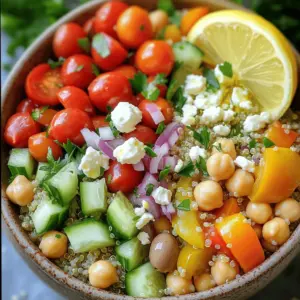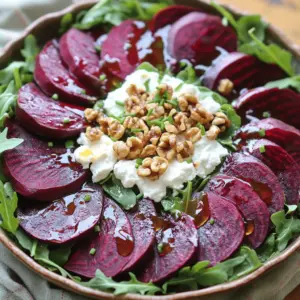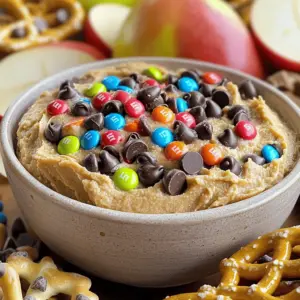- Sweet and Sour Chicken Flavorful Family Favorite Dish
- Mediterranean Chickpea Bowl Nourishing and Simple Dish
- Cheesy Cauliflower Bake Simple and Tasty Delight
- Satisfying Avocado Toast with Egg Recipe Today
- Peach Cobbler Dump Cake Simple and Delicious Treat
- Cranberry Orange Muffins Scrumptious and Easy Recipe
- Roasted Beet and Goat Cheese Salad Flavorful Delight
- Honey Lime Fruit Salad Refreshing and Simple Recipe
- Cheesy Garlic Knots Irresistible Flavor and Easy Recipe
- Pineapple Coconut Smoothie Refreshing Tropical Blend
- Mouthwatering Minestrone Soup Simple and Flavorful
- Big Mac Tacos Flavorful and Fun Recipe to Try
- Potato and Sausage Chowder Hearty Comfort Food Recipe
- Pot Roast Recipe Simple and Flavorful for Dinner
- Carbonara with Pan Seared Scallops Flavor Boost
- Cornbread Cookies with Honey Buttercream Delight
- Sweet Potato Hand Pies Flavorful and Simple Recipe
- Cheesy Chicken Wraps Easy Recipe for Dinner Delight
- RumChata Cheesecake Dip Rich and Creamy Treat
- Chicken Alfredo Garlic Bread Bowls Deliciously Easy
- Delicious Chicken Tenderloin Meals for Easy Cooking
- French Onion Grilled Cheese Sandwich Tasty and Hearty
- Classic Chicken Fried Steak Tasty Comfort Meal
- Flavorful Cowboy Butter Chicken Juicy and Easy Recipe
- Best Caprese Pasta Salad Fresh and Flavorful Delight
- Savory Slow Cooker Spaghetti Casserole Recipe
- Crispy Chicken Katsu Simple and Tasty Recipe Guide
- Aloo Keema - Ground Beef and Potato Curry Delight
- Better Than Anything Cake Delightful and Easy Recipe
- Mint Chocolate Fudge Decadent and Easy Dessert Recipe
- Egg Mushroom Sauce Fries Savory Comfort Food Dish
- Monster Cookie Dough Dip Irresistible Treat Idea
- Maqluba - Arabic Rice Dish Flavorful Cooking Guide
- S'mores Popcorn Balls Irresistible Sweet Treats
- Crispy Garlic Mushroom Bites
- Sun-Dried Tomato and Spinach Grilled Cheese Delight
- Mango Sago with Coconut Milk Refreshing Dessert Treat
- Easy Ravioli Sauce Quick and Flavorful Recipe
- Grilled Shrimp Bowl with Avocado and Corn Salsa Delight
- Italian Sandwich Sliders Flavorful and Easy Recipe
- Southern-Style Honey Butter Cornbread Poppers Delight
- Authentic New Orleans Gumbo Flavorful and Hearty Dish








![To make a tasty Honey Lime Fruit Salad, you need fresh fruits. Here’s what I use: - 2 cups diced watermelon - 1 cup diced pineapple - 1 cup fresh strawberries, sliced - 1 cup blueberries - 1 ripe kiwi, peeled and sliced These fruits give the salad a bright and colorful look. They also add different textures and flavors. Watermelon is juicy, while pineapple brings a sweet, tangy taste. Strawberries add a lovely red color, and blueberries pop with sweetness. Kiwi adds a unique flavor and a beautiful green hue. The dressing is key to this salad’s flavor. It’s simple yet delicious, made with: - 1/4 cup honey - 2 tablespoons fresh lime juice - Zest of 1 lime The honey makes it sweet, while the lime juice adds a tangy kick. The lime zest enhances the flavor and aroma. This dressing ties all the fruits together, making every bite refreshing. A little garnish makes everything better! For this salad, I use: - Fresh mint leaves Mint adds a burst of fresh flavor. It also looks great on top of the salad. Just sprinkle some leaves before serving, and your dish will shine. For the full recipe, check the Honey Lime Fruit Salad section. Enjoy making this fresh and simple dish! To start, I prepare the fruits carefully. I dice the watermelon and pineapple into small cubes. I slice the strawberries into thin pieces. The blueberries stay whole, adding a nice pop of color. I peel and slice the kiwi too, making sure each piece is bite-sized. Next, I combine all the fruits in a large mixing bowl. I gently mix them together, ensuring they sit nicely. This colorful mix looks great and tastes even better! In a small bowl, I whisk together the honey, fresh lime juice, and lime zest. The honey adds sweetness, while the lime juice brings a bright tang. The zest adds more flavor and aroma. I stir until everything blends well. This dressing is simple yet so tasty! Now, I drizzle the honey-lime dressing over the mixed fruits. I gently toss the salad, making sure every piece gets coated. It’s important to be gentle, so I don’t mash the fruit. After that, I cover the bowl with plastic wrap. To let the flavors meld, I refrigerate the salad for at least 30 minutes. This step is key. The chilling time enhances the taste, making each bite refreshing! When making honey lime fruit salad, choose ripe and fresh fruits for the best taste. Look for watermelon that feels heavy for its size. The skin should be dull, not shiny. Pineapples should smell sweet at the base, and the leaves should pull out easily. Strawberries should be bright red with no white spots. For blueberries, select plump ones with a smooth skin. Kiwi should be soft but not mushy. Picking ripe fruits makes your salad burst with flavor. Combining the fruits without mashing them is key. When you mix, use a large spoon or spatula. Start from the bottom and lift gently to the top. This way, you keep the shape and texture of each fruit. You want a mix that looks vibrant and fresh, not a mushy blend. Take your time and enjoy the process. A gentle touch helps keep your salad colorful and appealing. Letting your salad chill enhances the taste. I suggest refrigerating it for at least 30 minutes. This time allows the honey and lime flavors to soak into the fruits. The longer you wait, the more the flavors meld together. However, don’t leave it too long, or the fruit can get soggy. A little marination goes a long way in making this salad truly refreshing. For the full recipe, check out the recipe section above! {{image_2}} You can change your Honey Lime Fruit Salad by using different fruits. Adding citrus like oranges or mandarins brightens the flavor. These fruits add a sweet and juicy touch. They also give a nice pop of color. Tropical fruits like mango or papaya can also work well. Mango adds a creamy texture, while papaya brings a sweet and floral taste. Enjoy mixing these fruits to keep things fun and fresh! If you want a vegan option, try using agave or maple syrup instead of honey. Both give a great sweetness that fits well in the dressing. They can help you enjoy this dish while sticking to your diet. For a low-calorie option, use a sugar-free syrup. This keeps the flavor but cuts down on calories. You can still enjoy this fresh salad without worry. You can serve your Honey Lime Fruit Salad in many ways. Use small bowls for individual servings. This makes it easy for everyone to grab their own. For a fun twist, try serving on skewers. Simply thread the fruit pieces onto wooden or metal skewers. This makes a great party snack and looks appealing on a plate. For the full recipe, check out the details above! To store leftovers of your honey lime fruit salad, place it in an airtight container. This keeps the salad fresh and prevents it from drying out. You can also cover the bowl tightly with plastic wrap. Always store it in the fridge. This helps keep the fruit crisp and tasty for later. The salad stays fresh for about 2 to 3 days in the fridge. After this time, the fruits may start to get mushy. If you see any signs of spoilage, like brown spots on the fruit, it's best to throw it away. To enjoy the best taste, eat the salad within the first 24 hours. You can freeze honey lime fruit salad, but it may not taste the same after thawing. The fruits can become watery and lose their crunch. If you want to freeze it, use a freezer-safe container. Make sure to leave some space at the top since the salad will expand when frozen. For the best flavor, enjoy it fresh instead! For a complete recipe, check the [Full Recipe]. You can make this salad your own! Try adding different dressings. A yogurt dressing works well. You can mix in nuts for crunch, like almonds or walnuts. They add good texture and flavor. Yes, this salad is very healthy! Each fruit brings its own benefits. Watermelon is hydrating and low in calories. Pineapple is great for digestion. Strawberries are full of vitamins. Blueberries are packed with antioxidants. Kiwi adds fiber and vitamin C. Together, they make a nutritious snack. Yes, you can prepare this salad ahead of time. Just mix the fruits and dressing, then chill. It’s best to store it in the fridge for up to a few hours. This way, the flavors blend well. For events, make it the day before for easier serving. Some fruits pair great with honey and lime! Try citrus fruits like oranges or mandarins for a zesty kick. Tropical fruits like mango or papaya work well too. You can mix and match to find your favorite flavors. In this blog post, we explored how to make a tasty Honey Lime Fruit Salad. We covered the best fruits to use, along with a simple honey-lime dressing. I shared tips on selecting ripe fruit and serving ideas. Remember, you can customize this salad with seasonal fruits and dietary options. Fresh fruit salads are a healthy choice and perfect for any meal. Enjoy your creation, and don’t hesitate to put your twist on it!](https://cheftaling.com/wp-content/uploads/2025/05/e4ca25b1-5eb4-4e25-ab72-5e0c0af10839-2-300x300.webp)

![- 1 cup fresh pineapple chunks - 1 ripe banana - 1/2 cup coconut yogurt - 1 cup coconut milk (or almond milk for a lighter option) - 1 tablespoon honey or maple syrup (optional) - 1/2 teaspoon vanilla extract - 1/4 cup shredded coconut (unsweetened) - Ice cubes (optional, for a thicker smoothie) When measuring, use a standard cup for liquids and dry goods. A kitchen scale can help with precise measurements for ingredients like the banana. Ensure the pineapple is fresh for the best taste. If using frozen pineapple, reduce or omit the ice cubes. You can add spinach for extra nutrients without changing the flavor. Swap coconut yogurt for regular yogurt if you prefer. For a nutty taste, try adding a spoonful of almond butter. If you want it sweeter, increase honey or maple syrup. You can also use flavored coconut milk for a unique twist. Check the [Full Recipe] for more ideas! To make this Pineapple Coconut Smoothie, gather your ingredients first. You need fresh pineapple chunks, a ripe banana, coconut yogurt, and coconut milk. You can use almond milk if you want a lighter drink. Optional ingredients include honey or maple syrup and shredded coconut. This smoothie takes just five minutes to prepare. 1. Start by placing the pineapple chunks, banana, coconut yogurt, and coconut milk in your blender. 2. If you like sweetness, add honey or maple syrup. Then, mix in the vanilla extract and shredded coconut. 3. Blend everything on high until it becomes smooth and creamy. 4. If you prefer a thicker smoothie, toss in some ice cubes and blend again. 5. Taste your smoothie. You can adjust the sweetness or thickness by adding more milk or sweetener. 6. Pour the smoothie into two glasses. For a nice touch, sprinkle more shredded coconut on top. This Pineapple Coconut Smoothie is great for breakfast or a snack. You can pair it with a light meal or enjoy it on its own. For fun, serve it with a colorful straw or an umbrella for a tropical vibe. You can find the full recipe in the recipe section above. Enjoy! To make your smoothie smooth, blend well. I suggest starting on low speed. Gradually increase to high. If your smoothie is too thin, add more yogurt or banana. For a thicker texture, toss in some ice cubes. Blend again until you reach your desired creaminess. Fresh ingredients make a big difference. Use ripe bananas and sweet pineapple for the best taste. Look for pineapples that are golden and smell sweet. If you can, choose coconut yogurt without added sugars. This keeps your smoothie healthy and tasty. You can boost the flavor of your smoothie easily. Consider adding a pinch of salt. This helps bring out the sweetness. A squeeze of lime juice adds a zesty kick. You might try adding a handful of spinach for extra nutrients without changing the taste. For a fun twist, sprinkle in some chia seeds or flax seeds for added texture. If you want to try new flavors, check the Full Recipe for more ideas! {{image_2}} You can make this smoothie even more fun! Try adding mango or papaya for extra flavor. A splash of orange juice gives a zesty kick. For a more tropical taste, add passion fruit. These twists create a party in your mouth! Want a dairy-free version? Just use coconut yogurt and coconut milk. Both keep the smoothie creamy and delicious. You can also swap honey for maple syrup to keep it vegan. This way, everyone can enjoy the tropical goodness! Use seasonal fruits for a fresh twist! In summer, add strawberries or blueberries. In fall, try apples or pears. These fruits mix well with pineapple and coconut. They add new flavors and colors to your smoothie. For the full recipe, check the main section. If you have leftover smoothie, store it in a clean jar. Use an airtight lid to keep it fresh. You can also use a tightly sealed container. This helps avoid any unwanted smells in your fridge. Smoothies are best when you drink them fresh, but you can store them for later. To keep ingredients fresh, freeze them. Cut fresh pineapple and banana into chunks. Place them in a freezer bag. Be sure to remove air from the bag before sealing. You can also freeze coconut yogurt in ice cube trays. This makes it easy to grab what you need for your next smoothie. Your smoothie lasts about one day in the fridge. After that, the taste and texture can change. If you notice separation, just shake or stir it before drinking. For the best flavor and quality, enjoy your smoothie fresh or within a day. You can find the full recipe [here]. To make your smoothie thicker, you can add ice cubes. Ice cools the drink and gives it a nice texture. Another option is to use more frozen fruit. Frozen fruit blends well and makes the drink creamy. You can also increase the amount of coconut yogurt. This adds both thickness and flavor. Yes, frozen fruits work great in this recipe. Using frozen pineapple or banana keeps the smoothie cold and thick. This is a smart choice if fresh fruit is not available. Just remember to reduce the ice, as frozen fruit can create a thick texture on its own. Pineapple is rich in vitamin C and aids digestion. It helps support your immune system too. Coconut provides healthy fats that are good for energy. It also helps keep your skin healthy. Together, they create a delightful and nutritious drink. You can customize smoothies to suit kids' tastes. Try adding spinach for extra nutrition. It blends well with the fruit and tastes sweet. You could also swap out yogurt for a favorite flavor. Let kids choose toppings like sprinkles or extra fruit for fun. This Pineapple Coconut Smoothie is healthy and filling. One serving has about 200 calories. It is low in fat and high in vitamins. The smoothie provides potassium from bananas and fiber from fruit. For the full recipe, check out the details above. You now have all the tools to make a great pineapple coconut smoothie. We covered the key ingredients, steps for blending, and tasty tips to make it better. Remember, feel free to try different fruits and customize it to your taste. Store leftovers right so you waste nothing. This smoothie is not just yummy; it's also good for you. Enjoy each sip, and make it your new favorite!](https://cheftaling.com/wp-content/uploads/2025/05/8af2c02a-6b73-40d8-a566-015020b38e86-300x300.webp)







![- 2 cups cooked chicken, shredded or diced - 1 cup shredded cheddar cheese - 1 cup shredded mozzarella cheese - 1 tortilla wrap (large, any type) - 1/2 cup creamy ranch dressing - 1/2 cup fresh spinach, chopped - 1/2 cup bell peppers, diced (any color) - 1/4 cup red onion, thinly sliced - Salt and pepper to taste - Olive oil for grilling When making cheesy chicken wraps, I love using fresh ingredients. You can use cooked chicken from any source. Rotisserie chicken works great and saves time. Mixing both cheddar and mozzarella gives a rich, cheesy flavor. I add ranch dressing for creaminess. Fresh spinach adds color and nutrients. Bell peppers offer a nice crunch and sweet taste. Red onion gives a bit of zing. Always taste and adjust salt and pepper for the best flavor. - Other cheese types (Monterey Jack, Pepper Jack) - Additional vegetables (corn, diced tomatoes) - Spices (garlic powder, paprika) Feel free to explore other cheese options like Monterey Jack. It melts well too. You can add corn or diced tomatoes for extra flavor and texture. Spices like garlic powder or paprika can kick it up a notch. For the full recipe, check out the Ultimate Cheesy Chicken Wraps. These wraps are simple to make and packed with taste. - In a large bowl, combine chicken with cheeses and vegetables. - Add salt and pepper to taste. - Lay the tortilla wrap flat on a clean surface. - Spoon the cheesy chicken mixture into the center of the tortilla. - Fold the sides of the tortilla over the filling. - Roll from the bottom up to create a tight wrap. - Heat a skillet over medium heat, adding a drizzle of olive oil. - Place the wrap seam-side down in the skillet. - Cook for 3-4 minutes until golden brown. - Flip and cook the other side for another 3-4 minutes until crispy. - Remove the wrap, let it cool slightly, then slice in half for serving. - Use medium heat for even cooking. - Allow cheese to melt thoroughly for maximum flavor. For the full recipe, check out the detailed steps earlier. Enjoy making your Ultimate Cheesy Chicken Wraps! - Keep the filling to a minimum to avoid overflow. Too much filling can make it hard to roll. - Press down lightly while grilling for a crispy exterior. This step helps the wrap hold its shape and adds a nice crunch. - Serve with extra ranch dressing on the side. This adds flavor and keeps things fun. - Pair with a fresh salad or veggie sticks. This lightens the meal and adds extra nutrients. - For gluten-free wraps, use corn or rice tortillas. These options work well and taste great. - For dairy-free cheese, try brands made from nuts or soy. They melt nicely and keep the cheesy vibe. Follow the [Full Recipe] for clear steps and more details on making your wraps. Enjoy every bite! {{image_2}} You can mix things up with your cheesy chicken wraps. For spicy chicken wraps, just add some jalapeños or a splash of hot sauce to the filling. This gives your wraps a nice kick. If you love BBQ, try BBQ chicken wraps. Substitute ranch dressing with your favorite BBQ sauce. It adds a sweet and smoky flavor. If you prefer a meatless meal, you can replace chicken with grilled vegetables. Bell peppers, zucchini, and mushrooms work great together. For cheese lovers, use plant-based cheese alternatives. This way, you keep the cheesy goodness while making it vegetarian-friendly. The type of wrap you use can change the whole dish. Try whole wheat, spinach, or gluten-free tortillas. Each type adds its own flavor and texture. Plus, they cater to different dietary needs. So, whether you want a healthy option or a gluten-free meal, you’ve got choices. For the full recipe, check out the Ultimate Cheesy Chicken Wraps! Store any leftover cheesy chicken wraps in an airtight container in the fridge. This keeps them fresh and safe to eat. I recommend using them within 2-3 days for the best taste. After that, they may lose flavor and texture. You can reheat these wraps in a skillet or microwave. For the skillet, heat it on medium. This helps to keep the wrap crispy. If you choose the microwave, use a paper towel to cover the wrap. This keeps moisture in and prevents it from getting too dry. You can freeze both uncooked and cooked wraps. For uncooked wraps, wrap them tightly in plastic wrap and place them in a freezer bag. For cooked wraps, let them cool first before freezing. To thaw, place them in the fridge overnight. You can also use the microwave for a quick thaw. Just be careful not to overheat, as this can make the wrap soggy. Yes, you can make these wraps ahead of time. Here are some tips for prepping ingredients in advance: - Cooked Chicken: Shred or dice your chicken and store it in the fridge. - Veggies: Chop bell peppers, onions, and spinach, then keep them in airtight containers. - Cheese: Pre-shred your cheddar and mozzarella cheese to save time. - Assembly: Wraps can be assembled a few hours before cooking. Just keep them in the fridge until ready. You can serve many delicious sides and dips with these wraps. Here are some ideas: - Extra Ranch Dressing: A classic dip that pairs well with the cheesy flavor. - Fresh Salad: A light salad with greens and a vinaigrette adds freshness. - Veggie Sticks: Carrot and cucumber sticks offer a crunchy contrast. - Chips: Tortilla chips with salsa or guacamole add fun to the meal. Yes, leftover rotisserie chicken is perfect for these wraps. Here’s how to use it effectively: - Shred the Chicken: Remove the skin and shred the meat. - Mix with Ingredients: Combine the shredded chicken with cheese and veggies as directed in the recipe. - Flavor Boost: The rotisserie chicken adds great flavor, so you might want to adjust seasonings slightly. You can easily adjust the spice level to your liking. Here are some options: - Milder Wraps: Use less ranch dressing or choose a mild cheese. - Spicy Wraps: Add jalapeños, hot sauce, or a sprinkle of cayenne pepper. - Taste Test: Always taste your mixture before wrapping to get it just right. In this post, we explored making the Ultimate Cheesy Chicken Wraps. You learned about the key ingredients, easy steps, and tips for perfecting your wraps. Remember to keep fillings simple and grill them well for that perfect crunch. This dish is not only tasty but also customizable. You can adjust it to fit your diet or personal taste. Whether you enjoy it spicy or mild, it’s a fun meal for everyone. Try these ideas next time to create a wrap that you love!](https://cheftaling.com/wp-content/uploads/2025/05/bc0590ce-b9d2-402c-b65e-336672289f79-300x300.webp)



![- 2 large onions, thinly sliced - 2 tablespoons butter - 1 tablespoon olive oil - 1 teaspoon sugar - 1 teaspoon salt - 1 teaspoon black pepper - 4 slices of sourdough bread - 1 cup Gruyère cheese, shredded - 1 cup mozzarella cheese, shredded - 2 tablespoons mayonnaise - Fresh thyme leaves, for garnish - Additional cheeses (e.g., aged cheddar, provolone) - Herbs (e.g., rosemary, oregano) - Gluten-free bread alternatives - Vegan cheese options The ingredients for the French Onion Grilled Cheese Sandwich are simple yet vital. The onions bring sweetness and depth, while the cheeses add creaminess. I love using Gruyère for its nutty flavor and mozzarella for its gooey stretch. For optional add-ins, try aged cheddar or provolone for a twist. Fresh herbs like rosemary or oregano can enhance the flavors too. If you need gluten-free options, sourdough has great alternatives available. For a vegan twist, you can find plant-based cheeses that melt well. The Full Recipe includes everything you need to create this delicious sandwich. Enjoy the process of picking fresh, quality ingredients! To start, melt the butter and olive oil together in a large skillet over medium heat. The mix of these fats gives the onions a rich taste. Add the thinly sliced onions, sugar, salt, and black pepper to the skillet. Stir gently to coat the onions well. Caramelizing onions takes time, about 25-30 minutes. Keep stirring the onions every few minutes. This helps them cook evenly and prevents burning. You want them to turn a lovely golden brown. This deep flavor is what makes your sandwich special. While the onions cook, grab another skillet and heat it over medium heat. Spread mayonnaise on one side of each slice of sourdough bread. The mayo adds a nice crispiness when grilled. Now, lay two slices of bread in the skillet, mayo side down. Pile on the Gruyère and mozzarella cheese. They melt beautifully, giving a gooey texture. After your onions are ready, scoop them onto the cheese. Top with more cheese for extra yum! Finally, place the remaining slices of bread on top, mayo side up. For the perfect grill, cook the sandwiches for about 3-5 minutes on each side. You want the bread to turn golden brown and the cheese to melt completely. Use a spatula to press down gently. This helps the cheese stick and creates a nice crust. When your sandwich is done, you’ll see a golden crust and hear a slight sizzle. Remove it from the skillet and let it cool for a minute before cutting in half. Garnish with fresh thyme leaves for a touch of color and flavor. For the full recipe, check out the complete cooking instructions. Enjoy your tasty and hearty French onion grilled cheese sandwich! For the best flavor, cook onions slowly. Aim for low heat and take your time. This method brings out natural sweetness. Stir often to prevent sticking. Avoid burning by watching closely. If they start to brown too fast, lower the heat. A perfect caramelization takes about 25-30 minutes. Choosing the right cheeses makes a big difference. I recommend Gruyère and mozzarella. Gruyère gives a rich flavor, while mozzarella adds stretch. Use equal parts for great taste and texture. Control the temperature while grilling. Medium heat works best. This helps the cheese melt evenly without burning the bread. Pair your sandwich with a warm soup for comfort. Tomato soup is a classic choice. A light salad also works well. For sides, try crispy fries or a simple green salad. These add crunch and balance to the meal. Enjoy your tasty creation with friends or family! {{image_2}} You can spice up your French onion grilled cheese in fun ways. Try adding garlic powder for a rich flavor. Smoked paprika adds a hint of warmth and depth. Both spices mix well with the onion's sweetness. You can also switch up the bread. Sourdough is great, but consider using whole wheat or rye. Each type of bread gives a unique taste and texture. Seasonal vegetables can make your sandwich shine. In fall, add mushrooms for an earthy taste. Spinach brightens the dish in summer. These veggies not only add flavor but also nutrition. You can adjust the spices for the season too. In cooler months, use warming spices like nutmeg. For summer, keep it light with fresh herbs. If you're watching calories, use less cheese or low-calorie bread. You can still enjoy great flavor without the extra fat. For a vegan twist, substitute regular cheese with vegan cheese. Use plant-based butter or olive oil too. This way, everyone can enjoy this tasty sandwich. For the full recipe to create your delicious sandwich, check out the [Full Recipe]. To keep your French onion grilled cheese sandwich fresh, wrap it tightly in foil or place it in an airtight container. This helps maintain the sandwich's flavor and texture. Store it in the fridge. Leftovers can last for about 3 days. After that, the bread may become stale. For the best taste, reheat your sandwich in a skillet over medium heat. Add a little butter to the pan for extra flavor. Cook each side for about 3-4 minutes. This keeps the bread crispy and warms the cheese. If using an oven, preheat it to 350°F. Wrap the sandwich in foil to avoid sogginess. Heat for about 10-15 minutes until warm. Yes, you can freeze these sandwiches! Wrap each sandwich in plastic wrap and then in foil. This prevents freezer burn. They can last for about 2 months in the freezer. When ready to eat, thaw in the fridge overnight. For reheating, use a skillet or oven as mentioned before. This keeps the sandwich tasty and warm. For the complete cooking details, check out the Full Recipe. It takes about 10 minutes to prep. Cooking the onions takes around 25 to 30 minutes. Grilling the sandwich takes an extra 6 to 10 minutes. In total, you need about 40 minutes to finish this tasty meal! Yes, you can! Gruyère is great, but you can mix in aged cheddar or provolone. Each cheese gives a unique flavor. You can even try blue cheese for a bold taste. Just make sure to pick cheeses that melt well. Use a mix of cheeses like Gruyère and mozzarella. Spread mayonnaise on the bread for extra creaminess. Grill over medium heat to melt the cheese slowly. This will help you get that perfect gooey texture. You can add mushrooms, spinach, or bell peppers. Sauté them with the onions to blend the flavors. Zucchini or roasted red peppers can also work well. Just keep the veggie amount balanced so it does not overpower the cheese. You can find the complete cooking instructions and ingredient list in the Full Recipe. This will guide you through making your own delicious French Onion Grilled Cheese Sandwich. In this post, we covered how to make a French Onion Grilled Cheese Sandwich, focusing on key ingredients and techniques. From caramelizing onions to grilling the perfect sandwich, I shared tips and tricks to elevate your dish. Remember, you can customize with different cheeses and seasonal veggies, adapting it to your taste or dietary needs. Whether it's a cozy meal or a quick lunch, this sandwich delivers great flavor with ease. Dive in, experiment, and enjoy a comforting bite of gooey goodness every time.](https://cheftaling.com/wp-content/uploads/2025/05/8afa60d3-9d35-4aad-8cda-d4e06ec5e91b-300x300.webp)
![To make classic chicken fried steak, you need simple, quality ingredients. Here’s what you’ll need: - Beef cube steaks - Buttermilk - All-purpose flour - Seasonings (garlic powder, onion powder, paprika, cayenne pepper) - Vegetable oil - Unsalted butter - Fresh parsley (optional) These ingredients are key to a tasty and crispy meal. The beef cube steaks are the star of the dish. They give the meal its hearty and satisfying bite. Buttermilk helps to tenderize the meat, making it juicy and flavorful. The all-purpose flour coats the steaks and gives them that golden crunch we all love. The seasonings add depth to each bite. Garlic and onion powders provide savory notes, while paprika adds a touch of color and flavor. If you like heat, cayenne pepper adds a nice kick. Vegetable oil is important for frying. It keeps the steaks crispy and delicious. Unsalted butter enhances the gravy, making it rich and creamy. Finally, fresh parsley adds a pop of color and a hint of freshness when you serve the dish. For the full recipe, check out the detailed instructions to bring this comfort meal to your table. To start, you need to marinate the steaks. In a shallow dish, mix the buttermilk with a pinch of salt and black pepper. This adds flavor and helps tenderize the meat. Place the cube steaks in the dish, making sure they soak well. Cover the dish and put it in the fridge for at least one hour, or even overnight if you can. The longer they soak, the better they taste. Next, grab a separate bowl for the coating. Here, you will mix the all-purpose flour with the garlic powder, onion powder, paprika, cayenne pepper, and a pinch of salt and black pepper. Whisk it all together until it’s well combined. This mix gives the steak its crunchy crust. Now, it's time to dredge the steaks. Take the marinated steaks out of the buttermilk. Let the extra buttermilk drip off. Then, coat each steak in the flour mix. Press gently to help the flour stick. Shake off any extra flour. This step is key for that crispy texture you want. In a large skillet, pour in the vegetable oil. Heat it over medium-high heat until it shimmers. This usually takes about 5 to 7 minutes. To check if the oil is ready, drop in a pinch of flour. If it sizzles right away, you’re good to go. Now, carefully add the dredged steaks to the hot oil. Be careful not to crowd the pan. Fry each steak for about 3 to 4 minutes on each side. You want them to turn golden brown and crispy. If you need to, fry them in batches, adding more oil as necessary. Once you have fried all the steaks, take them out and let them drain on paper towels. In the same skillet, lower the heat to medium. Add the unsalted butter and let it melt. Whisk in about ¼ cup of the remaining flour mixture to create a roux. Let it cook for about 1 to 2 minutes until it turns lightly brown. Next, slowly whisk in 1 cup of milk. You can add more if you want a thinner gravy. Keep whisking until it’s smooth. Let it simmer for a few minutes until the gravy thickens. Add salt and pepper to taste. Finally, place the crispy chicken fried steaks on a plate. Pour the warm gravy generously over the top. If you like, sprinkle fresh parsley for a nice touch. Enjoy your delicious meal! For the complete recipe, check out the [Full Recipe]. To get that perfect crispy coating, start with dry steaks. After marinating in buttermilk, shake off excess liquid. Dredge the steaks in seasoned flour. Press the flour into the meat for a good grip. This extra step helps the coating stick. Fry in hot oil to seal the crust quickly. If the oil is not hot enough, the coating can become soggy. You can tweak the spice levels to fit your taste. If you love heat, add more cayenne pepper. If you prefer mild, skip it. Garlic powder, onion powder, and paprika add great flavor without too much spice. Always taste your flour mix before coating the steaks. This helps ensure your seasoning is just right. Frying takes some care. Use a large skillet and don't crowd the pan. This keeps the oil hot and helps the steaks cook evenly. Keep the heat at medium-high to achieve a golden brown color. Use a thermometer if needed; 350°F is perfect. Drain the cooked steaks on paper towels to remove excess oil. For extra flavor, use fresh butter in the gravy. Always taste and adjust seasonings as needed. For the complete cooking process, refer to the [Full Recipe]. {{image_2}} You can switch meats for chicken or pork. Chicken fried steak is great, but chicken or pork also work well. Use chicken breast or pork chops. Just follow the same steps. The buttermilk marinade keeps the meat juicy. You’ll still get that crispy coating. If you need a gluten-free meal, you can easily adapt the recipe. Use gluten-free flour instead of all-purpose flour. The buttermilk and seasonings remain the same. The flavor stays rich and tasty. Just make sure to fry in clean oil to avoid cross-contamination. You can add extra flavors to your chicken fried steak. Try adding herbs like thyme or rosemary to the flour mix. You could also use spices like cumin or smoked paprika for a twist. These additions can change the taste and make it even more special. Adjust the spices to match your taste. Enjoy experimenting with flavors! To keep your chicken fried steak fresh, let it cool first. Place it in an airtight container. You can store it in the fridge for up to three days. Make sure to keep the gravy separate to prevent sogginess. When ready to eat, reheat the steak in a skillet. Use medium heat for best results. Add a small amount of oil to help crisp it up again. Heat until hot and golden, about 3 to 5 minutes. For the gravy, warm it in a saucepan over low heat. Stir often to keep it smooth. You can freeze chicken fried steak for later. Wrap each piece in plastic wrap, then put it in a freezer bag. It will keep well for up to two months. When you are ready to eat, thaw it in the fridge overnight before reheating. Enjoy your meal again with this easy process! The best way to tenderize cube steaks is by marinating them. Soaking them in buttermilk works wonders. The acid in buttermilk breaks down tough fibers. You can also pound the steaks with a meat mallet. This helps to soften the meat more. Remember to let them sit in the marinade for at least one hour. Yes, you can use different types of milk for your gravy. Whole milk adds creaminess, while low-fat milk works too. If you prefer a dairy-free option, try almond or oat milk. Just know that the flavor may change a bit. Always whisk slowly to get a smooth texture. Many sides pair nicely with chicken fried steak. Here are a few popular ones: - Mashed potatoes - Green beans - Coleslaw - Macaroni and cheese - Cornbread These sides balance the meal and add flavor. You can mix and match based on your taste. To avoid soggy coating, make sure the oil is hot enough before adding the steaks. The oil should be around 350°F (175°C). Fry the steaks in batches and don’t overcrowd the pan. This keeps the temperature steady. Let the cooked steaks drain on paper towels to remove excess oil. In this article, we covered how to make delicious chicken fried steak. We explored the key ingredients and detailed the step-by-step process. You learned how to marinate the steaks, prepare the coating, and fry them to perfection. I shared tips for a crispy finish and ways to customize the dish. Finally, we discussed storage options and common questions. Enjoy experimenting with this recipe. It's a tasty meal that’s worth the effort!](https://cheftaling.com/wp-content/uploads/2025/05/b6fe98c9-e9eb-4fa3-8d91-b13fed0ec19d-300x300.webp)
![- Chicken and Spices - 4 boneless, skinless chicken thighs - Salt and pepper to taste - 1 teaspoon smoked paprika - 1 teaspoon onion powder - 1 teaspoon dried oregano - 1/2 teaspoon cayenne pepper (adjust for spice level) - Cowboy Butter Components - 1/4 cup unsalted butter, softened - 4 cloves garlic, minced - 2 tablespoons olive oil - Garnishing Elements - 2 tablespoons fresh parsley, chopped (for garnish) - Lemon wedges (for serving) This dish has simple yet bold flavors. The chicken thighs are juicy and soak up the spices. I love how the cowboy butter adds richness and depth. It’s a great mix of garlic and spices that makes every bite delightful. The garnishing elements brighten the dish, making it not just tasty but also pretty to serve. You can find the full recipe for more detailed steps and tips! To start, gather your ingredients for the cowboy butter. In a medium bowl, mix these items: - 1/4 cup unsalted butter, softened - 4 cloves garlic, minced - 1 teaspoon smoked paprika - 1 teaspoon onion powder - 1 teaspoon dried oregano - 1/2 teaspoon cayenne pepper - Salt and pepper to taste Blend these together until smooth and creamy. This butter packs a flavor punch! Next, let's prepare the chicken thighs. Pat them dry with paper towels. This step helps the skin get crispy. Season both sides with salt and pepper. In an oven-safe skillet, heat 2 tablespoons of olive oil over medium heat. Once hot, add the chicken thighs. Sear them for about 5-6 minutes on each side. Look for a nice golden-brown crust. This adds great flavor to the dish! After searing, take the chicken out of the skillet. Spread a generous tablespoon of your cowboy butter on each thigh. Make sure to cover it well. Now, place the skillet in your preheated oven at 400°F (200°C). Bake for 20-25 minutes. Use a meat thermometer to check the chicken's internal temperature. It should reach 165°F (74°C). Once done, take the chicken out of the oven and let it rest for 5 minutes. This helps keep it juicy. Garnish with fresh parsley and serve with lemon wedges. Enjoy your delightful cowboy butter chicken! For the complete recipe, refer to the Full Recipe section. Adjusting Spice Levels You can change the heat level in your dish. If you love spice, add more cayenne pepper. For a milder taste, cut back on it. Start with half a teaspoon. You can always add more if you want. Taste your cowboy butter mix before cooking. This way, you can find the right balance for your palate. Optimal Cooking Techniques Searing the chicken is key. This step brings out great flavors. Use medium heat to get a nice golden crust. Don’t rush this step; let it cook for 5-6 minutes on each side. After searing, bake the chicken in the oven. This keeps it tender and juicy. Be sure to check the internal temperature. It should reach 165°F (74°C) for safety. Ensuring Juicy Chicken Juicy chicken is all about care. Start by patting the chicken dry. This helps it sear better. Season well with salt and pepper. After baking, let the chicken rest for 5 minutes. This allows the juices to settle. When you cut into it, you’ll find a juicy and flavorful bite. Enjoy this dish with lemon wedges for a fresh touch! For the full recipe, check the Full Recipe section. {{image_2}} Adding Vegetables You can make this dish even better by adding vegetables. Toss in some bell peppers, onions, or zucchini while you sear the chicken. They soak up the cowboy butter flavors and add nice colors. You can also roast some asparagus or broccoli on the side for a crunchy contrast. Experimenting with Different Proteins Cowboy butter works well with other proteins too. Try using shrimp or salmon for a quick twist. You can even use pork chops or turkey. Just adjust the cooking time based on the protein you choose. This lets you enjoy the rich taste of cowboy butter with whatever you like best. Incorporating Unique Spices Don't hesitate to experiment with different spices. Swap smoked paprika for curry powder or add cumin for a warm flavor. Try fresh herbs like thyme or rosemary for a fresh touch. Each spice brings a new taste, making your dish unique every time you cook it. For the complete recipe, click [Full Recipe]. Refrigeration Tips You can keep leftover cowboy butter chicken in the fridge. Place it in an airtight container. It will stay fresh for about 3 to 4 days. Make sure the chicken cools down before sealing the container. This helps prevent moisture build-up. Freezing Options If you want to save it for later, you can freeze the chicken. Wrap each piece tightly in plastic wrap. Then, place them in a freezer bag. This way, it can last for about 2 to 3 months. Label the bag with the date. This helps you know how long it has been in the freezer. Reheating Instructions To reheat, take the chicken out of the fridge or freezer. If frozen, let it thaw in the fridge overnight. Preheat your oven to 350°F (175°C). Place the chicken in a baking dish. Cover it with foil to keep it moist. Heat for about 20 minutes or until hot. You can also reheat it in the microwave. Just cover the chicken and heat in short bursts until warm. For the full recipe, check out Flavorful Cowboy Butter Chicken. What can I serve with this dish? You can pair this chicken with many sides. Some great options are rice, mashed potatoes, or roasted vegetables. A fresh salad also works well. The bright flavors of lemon complement the rich butter. Can I make it ahead of time? Yes, you can prepare the cowboy butter early. Mix the butter and spices, then store it in the fridge. You can also season the chicken ahead. Just remember to cook it fresh for the best taste. Is it suitable for meal prep? Absolutely! This dish is great for meal prep. Cook the chicken, then store it in portions. It stays tasty for a few days in the fridge. You can reheat it easily for quick meals. For the full recipe, check the previous section. In this article, we explored how to make flavorful Cowboy Butter Chicken. We discussed the key ingredients, prepping, cooking, and some handy tips for juicy results. You can also try fun variations and learn proper storage for leftovers. With this easy recipe, you can create a tasty meal that pleases everyone. Enjoy cooking and have fun exploring your flavor creations!](https://cheftaling.com/wp-content/uploads/2025/05/ba609c1a-bb0b-41a0-8295-53a3714dcfe7-300x300.webp)

![For this tasty dish, you need: - 8 oz uncooked spaghetti - 1 lb ground turkey or chicken - 1 small onion, finely chopped - 2 cloves garlic, minced - 1 bell pepper, diced (any color) - 1 can (14.5 oz) diced tomatoes, with juices - 1 can (15 oz) tomato sauce - 1 tsp Italian seasoning - 1 tsp salt - ½ tsp black pepper - 2 cups shredded mozzarella cheese - 1 cup cottage cheese These ingredients blend well together. The ground turkey or chicken adds protein. The veggies bring color and flavor. The cheeses make it creamy and rich. You can add more flavor or texture with these: - Sliced olives - Chopped spinach - Mushrooms - Zucchini slices - Cooked sausage Feel free to mix and match. These ingredients can make your dish unique. Herbs and spices can lift your casserole. Here are some great options: - Fresh basil - Oregano - Thyme - Red pepper flakes Adding these can give your dish a fresh taste. I often like to play with flavors. You can too! Check out the Full Recipe for more tips and ideas. Start by cooking the meat. Heat a skillet over medium heat. Add ground turkey or chicken. Cook until it turns brown. This takes about 5 to 7 minutes. Next, add the chopped onion and minced garlic. Stir for a minute, then add the diced bell pepper. Cook for another 4 minutes until the veggies soften. This step builds flavor and makes the dish tasty. In a large bowl, mix your cooked meat and veggies. Add the diced tomatoes and tomato sauce next. Sprinkle in the Italian seasoning, salt, and black pepper. Stir until everything blends well. Now, break the uncooked spaghetti in half. Toss it into the meat mixture and mix again. This is where you unite all flavors for the casserole. Transfer the mixture to your slow cooker. Spread it out evenly. Next, dollop the cottage cheese on top. Then, sprinkle half of the shredded mozzarella cheese over everything. Cover and set your slow cooker. You can choose to cook on low for 4 to 5 hours or on high for 2 to 3 hours. Check that the spaghetti is tender. In the last 30 minutes, add the rest of the mozzarella on top. Cover again to let it melt. Once done, mix gently and serve. For a fresh touch, you can add basil or parsley before serving. Follow the Full Recipe for more guidance. To make the best spaghetti casserole, you must layer it right. Start with the meat mixture at the bottom. This helps keep the spaghetti moist. Next, add the uncooked spaghetti, broken in half. This allows it to soak up flavors. Then, spoon cottage cheese on top. Finally, sprinkle half of the mozzarella cheese. This layering creates a nice texture and taste. Slow cooking works best when you keep the lid on. Each time you lift the lid, heat escapes. Try to set your slow cooker to low for a longer cook time. This allows flavors to blend well. Stir the casserole gently halfway through cooking. This helps ensure even cooking and flavor distribution. Avoid overcooking the spaghetti. If you cook it too long, it can turn mushy. Also, don’t skip the cheese. It adds creaminess and richness to the dish. Make sure to season well. Tasting as you go helps you balance flavors. Lastly, don’t rush the cooking process. Patience leads to a perfect, delicious casserole. For the full recipe, check out the Cheesy Slow Cooker Spaghetti Casserole. {{image_2}} You can swap the ground turkey or chicken for other meats. Try ground beef or pork for a richer flavor. If you want to reduce fat, use lean ground meats. You can also use cooked sausage for a spicy kick. Just be sure to adjust the cooking time if you use cooked meat. To make a vegetarian version, replace the meat with lentils or mushrooms. Both add great texture and flavor. For a vegan option, use plant-based meat alternatives, like crumbled tofu or tempeh. Make sure to check that your cheese is dairy-free if you go vegan. You can also add extra veggies like spinach or zucchini for more nutrients. Cheese can change the whole dish. While mozzarella is a classic choice, you can mix it up. Try using cheddar for a sharp flavor or pepper jack for some heat. Ricotta can add creaminess if you layer it in. Feel free to experiment with what you have on hand. Cheese lovers can even mix multiple kinds for a cheesy delight. For the complete recipe, check the [Full Recipe]. After enjoying your slow cooker spaghetti casserole, you might have some leftovers. To keep them fresh, store them in an airtight container. Make sure the casserole is cool before sealing it. This way, it won't create steam that can make the dish soggy. Leftovers can last in the fridge for up to four days. If you think you won't eat them within that time, consider freezing instead. When you are ready to enjoy the leftovers, reheating is easy. You can use the microwave or the oven. For the microwave, place a portion on a plate and cover it with a damp paper towel. Heat for one to two minutes, stirring halfway through. If you use the oven, preheat it to 350°F (175°C). Place the casserole in a baking dish and cover it with foil. Heat for about 20 minutes or until warm. Adding a bit of cheese on top before reheating can make it even better! If you want to freeze your casserole, it’s best to do so before cooking. Prepare the dish as directed, but do not cook it. Instead, cover it well with plastic wrap and then foil. Label the container with the date. This way, you'll know when to use it. You can freeze it for up to three months. When you are ready to cook it, thaw it in the fridge overnight. Then, cook it in the slow cooker as per the full recipe. Enjoy your delicious meal even later! Yes, you can use cooked spaghetti. It will change how the noodles cook. If you use cooked spaghetti, add it later. Mix it in when the meat and sauce are hot. This helps keep the noodles from getting mushy. Just make sure to stir gently to coat the noodles with sauce. You can check by looking at the spaghetti. It should be soft but not mushy. If you press a fork into the casserole and it breaks apart easily, it’s done. The cheese on top should also be melted and bubbly. Use a thermometer to check the internal temperature; it should be at least 165°F. This casserole goes well with many sides. Here are some ideas: - Garlic bread - Side salad with fresh greens - Steamed vegetables like broccoli or green beans - A light soup, like minestrone These sides will add a nice balance to your meal. You can also serve some fruit for dessert to finish on a sweet note. For the full recipe, check out the details above! In this article, we explored the best ingredients and steps for making a Slow Cooker Spaghetti Casserole. You learned how to prepare the meat and veggies, layer the dish, and avoid common mistakes. We also discussed tasty variations and storage tips for leftovers. Now, you can enjoy a delicious meal with ease. Using a slow cooker opens up many options and saves time. Dive in and create your perfect spaghetti casserole today!](https://cheftaling.com/wp-content/uploads/2025/05/87225ee4-8f1c-4776-91dd-dbcacf081841-300x300.webp)

. For Aloo Keema, start by gathering your ingredients. You will need: - 500g ground beef - 2 large potatoes, peeled and diced - 1 large onion, finely chopped - 2 tomatoes, chopped - 2 green chilies, finely chopped - 4 cloves garlic, minced - 1-inch piece ginger, minced - 1 teaspoon cumin seeds - 1 teaspoon coriander powder - 1 teaspoon garam masala - 1/2 teaspoon turmeric powder - 1 teaspoon red chili powder (adjust to taste) - Salt to taste - 2 tablespoons cooking oil - Fresh cilantro, chopped for garnish - Lemon wedges for serving Chop the onion, tomatoes, and chilies first. Mince the garlic and ginger next. This prep makes cooking easier and faster. Heat the cooking oil in a large skillet over medium heat. Add cumin seeds and let them crackle. This adds a nice flavor. Next, add the chopped onions. Sauté until they turn golden brown. This usually takes about 5 minutes. Stir in minced garlic and ginger. Cook for one more minute until fragrant. Now, add the chopped tomatoes and green chilies. Cook until the tomatoes soften and their juices flow. Mix in the ground beef. Break it apart with a spoon. Cook until the beef turns brown and is fully cooked. This should take about 8-10 minutes. Next, sprinkle in turmeric, coriander powder, red chili powder, and salt. Stir well and cook for 5 minutes. Now, add the diced potatoes and mix everything well. Pour in enough water to cover the mixture, about 1-1.5 cups. Stir and bring to a boil. Reduce the heat to low and cover the pot. Let it simmer for 20-25 minutes until the potatoes are tender. Stir occasionally to prevent sticking. Once cooked, stir in garam masala. Adjust salt if needed. Cook for another 5 minutes uncovered. Remove from heat and garnish with chopped cilantro. Serve hot in a deep bowl with lemon wedges on the side. This dish pairs well with warm naan or steamed rice. Enjoy your Aloo Keema! For the full recipe, check out the detailed instructions above. Cooking Aloo Keema can be easy, but some mistakes can ruin it. One common error is overcooking the potatoes. They should be tender but not mushy. Another mistake is not browning the beef properly. This step adds depth to the flavor. Lastly, don’t skip the spices. They are key to making the dish taste great. If your potatoes are not cooking through, you may need to adjust the cooking time. If you cut them larger, they will take longer. Start with 25 minutes of simmering. You can always check and cook more if needed. The beef should be cooked thoroughly, which usually takes about 10 minutes. To boost flavor, you can add fresh herbs like mint or more cilantro. A squeeze of lemon right before serving can make the dish pop. If you like heat, add more green chilies or red chili powder. For a richer taste, try using ghee instead of oil. This adds a unique flavor that elevates your Aloo Keema. For the full recipe, refer to the earlier section. {{image_2}} You can make a tasty vegetarian version of Aloo Keema. Use crumbled tofu or textured vegetable protein instead of beef. This gives a similar texture and absorbs all the flavors well. Add extra veggies like peas or carrots for more color and nutrients. Follow the same steps in the Full Recipe but skip the meat. The spices work wonders with veggies. Serve it hot with naan or rice for a hearty meal. For a kick, try making spicy Aloo Keema. Use more green chilies and red chili powder than the Full Recipe calls for. You can also add a pinch of cayenne pepper. This makes the dish hotter and more exciting. Balance the heat with a squeeze of fresh lemon juice. Serve with cool yogurt on the side. It helps tame the spice and adds a nice touch. You can switch up the meat in your Aloo Keema easily. Ground lamb or chicken works great. Each meat gives a unique flavor. Just cook it the same way as the beef in the Full Recipe. If you use chicken, it may cook faster, so watch it closely. Lamb adds richness, making the dish feel extra special. Enjoy the variety, and find your favorite! To keep your Aloo Keema fresh, let it cool down first. Once it's cool, put it in an airtight container. Store it in the fridge if you plan to eat it within three days. Make sure to label the container with the date. This way, you’ll know when it’s best to eat it. When you’re ready to enjoy leftover Aloo Keema, reheating is easy. You can use a microwave or stovetop. For the microwave, put it in a bowl and cover it with a damp paper towel. Heat for one to two minutes, checking halfway. If using the stovetop, warm it in a pan over low heat. Stir often to avoid burning. Add a splash of water if it seems dry. If you want to save Aloo Keema for later, freezing is a great option. Place cooled Aloo Keema in a freezer-safe container or bag. Squeeze out any extra air to prevent freezer burn. Label it with the date. You can freeze it for up to three months. When ready to eat, thaw it in the fridge overnight before reheating. Enjoy your meal with the same great taste! This information helps you keep your Aloo Keema delicious and safe to eat. For the full recipe, check out the recipe section above. You can use ground turkey or chicken instead of beef. These meats work well with the spices. If you prefer a vegetarian option, try using lentils or chickpeas. Both add a nice texture and flavor. For a hearty meal, you can also use crumbled tofu or tempeh. Each option brings unique tastes to your dish. Aloo Keema can be mild or spicy, depending on your taste. Typically, it includes green chilies for heat. If you want less spice, reduce the number of chilies. You can also remove the seeds from the chilies. If you enjoy heat, add more red chili powder. You control the spice level to suit your palate. Yes, you can easily make Aloo Keema in a slow cooker! Brown the meat and sauté the onions, garlic, and spices first. Then, add everything to the slow cooker. Cook on low for 6-8 hours or on high for 3-4 hours. The flavors meld beautifully, and the potatoes become tender. It's a great way to prepare this dish while you focus on other tasks. For the full recipe, check out the detailed instructions. In this post, we explored how to make Aloo Keema. We covered its key ingredients and side dishes, detailed step-by-step cooking instructions, and shared tips to avoid mistakes. I also provided variations to suit different tastes and suggestions for storing the dish. Aloo Keema is flexible and fun to cook. With the right tips, you can enjoy a tasty meal. Try these methods and make Aloo Keema your own!](https://cheftaling.com/wp-content/uploads/2025/05/89aaa144-47f1-4743-b126-84b144480c63-300x300.webp)
![To make Better Than Anything Cake, you will need these ingredients: - 1 chocolate cake mix (plus ingredients needed on the box) - 1 can (14 oz) sweetened condensed milk - 1/2 cup caramel sauce (store-bought or homemade) - 1 cup heavy whipping cream - 1/4 cup powdered sugar - 1 teaspoon vanilla extract - 1 cup toffee bits (chocolate-covered or plain) - Shaved dark chocolate or chocolate chips for garnish You can swap some ingredients for different flavors. Try these: - Use vanilla cake mix for a lighter flavor. - Substitute butterscotch sauce for caramel for an extra twist. - For a dairy-free version, use coconut cream instead of heavy cream. - Use dairy-free condensed milk to make it vegan. Choosing the best ingredients makes your cake taste even better. Here are some tips: - Pick a high-quality chocolate cake mix for rich flavor. - Look for sweetened condensed milk with no added preservatives. - Use fresh heavy cream for the best whipped topping. - Choose toffee bits that are crunchy and flavorful. - For the chocolate garnish, select good quality chocolate for a richer taste. Now that you have the right ingredients, you are ready to create this mouthwatering cake! For the full recipe, check the details above. To start, preheat your oven to 350°F (175°C). Grab a 9x13 inch baking pan and prepare it with cooking spray or parchment paper. Next, make the chocolate cake mix according to the box instructions. This usually means adding water, eggs, and oil. Once mixed well, pour the batter into the prepared pan. Bake it for the time listed on the box. After baking, let the cake cool for about 15-20 minutes in the pan. While the cake is still warm, take the end of a wooden spoon or a skewer. Poke holes all over the top of the cake, reaching the bottom. Make sure to create plenty of holes, as this helps the cake soak up the flavors. Now, mix the sweetened condensed milk and caramel sauce in a bowl. Pour this mixture over the cake, making sure it fills all the holes. Let the cake absorb this sweet goodness. After adding the condensed milk mixture, place the cake in the refrigerator for about 2 hours. This chilling time allows the flavors to come together and the cake to set. While you wait, prepare the whipped topping. In a mixing bowl, blend the heavy whipping cream, powdered sugar, and vanilla extract. Use an electric mixer to whip until you see stiff peaks. Once the cake has chilled, frost it with the whipped cream. Finally, sprinkle toffee bits on top. For an extra touch, add some shaved dark chocolate or chocolate chips as a garnish. Enjoy your Better Than Anything Cake! For the complete recipe, check out the [Full Recipe]. To make the best whipped topping, use cold heavy cream. Cold cream whips up better. Combine it with powdered sugar and vanilla extract in a mixing bowl. Use an electric mixer on medium-high speed. Whip until you get stiff peaks, which usually takes 3 to 5 minutes. This means the cream holds its shape well. Too much whipping can turn cream into butter, so stop once you see those peaks. One big mistake is not poking enough holes in the cake. If you don’t poke enough holes, the sweetened condensed milk won’t soak in well. Also, make sure to let the cake cool a bit before adding the milk mixture. Adding it too soon can make the cake too soggy. Lastly, don’t skip chilling the cake before adding the topping. Refrigeration helps set the flavors and improves texture. To boost flavor, consider adding a pinch of salt to the whipped cream. This makes the sweetness pop. You can also drizzle some extra caramel sauce on top for a beautiful look. For a fun twist, use different toppings like crushed cookies or fresh fruit. To make your cake more eye-catching, sprinkle shaved dark chocolate or chocolate chips on top. This adds both taste and flair, making your cake a showstopper at any gathering. {{image_2}} You can change the flavor of Better Than Anything Cake easily. Try using vanilla cake mix instead of chocolate. This gives a lighter taste. For a fall twist, use pumpkin spice cake mix. The warm spices add a cozy touch. You can also mix in different extracts like almond or coconut for more fun flavors. If you need gluten-free options, use a gluten-free chocolate cake mix. Many brands taste great and work well. When using gluten-free cake mix, check the instructions. You may need to adjust the liquid ingredients. For dairy-free, swap the sweetened condensed milk with coconut milk. Use a dairy-free whipped topping for the best results. Serve Better Than Anything Cake chilled for the best taste. A scoop of vanilla ice cream pairs wonderfully with it. You can also top it with fresh berries. Strawberries or raspberries add a nice tart flavor. For a fun touch, drizzle extra caramel sauce over each slice. Make this cake your own by trying these variations. Each change adds a new layer of fun and flavor to this already amazing dessert. For the full recipe, check out the details above! Store leftover Better Than Anything Cake in the fridge. Place it in an airtight container. You can also cover the dish tightly with plastic wrap. This keeps the cake fresh and moist. Do not leave it out at room temperature for too long. If you want to enjoy a slice warm, heat it in the microwave. Use a low setting for about 10-15 seconds. Check the cake to ensure it’s warm but not hot. You can also turn leftover cake into a trifle. Layer pieces with whipped cream and fruit for a fun dessert. The cake stays good for about 4-5 days in the fridge. After that, the taste may change. If you freeze it, it can last for about 2 months. Wrap it well in plastic wrap before freezing. Just remember to thaw it in the fridge overnight before serving. Better Than Anything Cake is a treat for chocolate lovers. The mix of sweetened condensed milk and caramel makes it rich and creamy. Each bite melts in your mouth. The toffee bits add a crunchy texture, making each slice unique. It’s easy to make and always impresses guests. I love how it tastes better as it sits. The flavors blend beautifully over time, creating a dessert that’s hard to resist. Yes, you can prepare Better Than Anything Cake a day in advance. This cake tastes even better when chilled overnight. Just follow the recipe, and then refrigerate it. Cover the cake tightly with plastic wrap to keep it fresh. When you’re ready to serve, simply add the whipped topping. This makes it a great option for parties or gatherings. If your cake turns out too dry, don’t worry! You can fix it with a simple trick. Use a mixture of milk or cream and sugar. Drizzle this over the cake to add moisture. Let it soak for a while. This will help bring back some of the cake’s softness. If you make Better Than Anything Cake, the sweetened condensed milk helps keep it moist. Just remember not to overbake! You learned about key ingredients, step-by-step baking, and storage tips. Choosing the right ingredients enhances flavor and quality. Avoid common mistakes to achieve the perfect cake. Explore variations for fun twists and dietary needs. Remember to store your leftovers properly to keep them fresh. With these insights, anyone can make a delicious cake that impresses. Enjoy baking and sharing your creation with others!](https://cheftaling.com/wp-content/uploads/2025/05/1f0d7416-a124-40c8-be20-793f92c988ce-300x300.webp)



![To make Maqluba, you need these key items: - 2 cups basmati rice, rinsed - 500g chicken thighs, bone-in, skinless - 1 large eggplant, sliced into rounds - 2 medium tomatoes, sliced - 1 large onion, sliced - 3 cloves garlic, minced - 4 cups chicken broth - 1 teaspoon ground cumin - 1 teaspoon ground turmeric - 1 teaspoon ground cinnamon - ½ teaspoon black pepper - Salt to taste - ¼ cup olive oil - Fresh parsley or cilantro for garnish - Lemon wedges for serving These ingredients create the layers of flavor and texture that make this dish special. You can swap out some items if you need to. Here are a few ideas: - Chicken: Use lamb or beef if you prefer. - Rice: Jasmine rice works well too. - Eggplant: Zucchini can replace it for a different taste. - Broth: Vegetable broth is a good option for a lighter flavor. These substitutes keep the dish tasty while fitting your needs. Using high-quality ingredients is key to great Maqluba. Fresh vegetables boost the flavor. Good rice absorbs broth well. Quality meat makes the dish tender. Local and organic items often taste better. They also support farmers. So, when you shop, choose fresh and flavorful ingredients. This makes your Maqluba even more special. For the full recipe and instructions, check out the [Full Recipe]. Start by prepping your ingredients. First, sprinkle salt on the sliced eggplant. Let it sit for about 20 minutes. This draws out moisture. After that, rinse the eggplant and pat it dry. It will taste better. Next, heat a large pot over medium heat. Pour in the olive oil. Add the sliced onions and cook until they turn soft and clear. This takes about 5 minutes. Then, toss in the minced garlic and chicken thighs. Fry them until they are browned on all sides. This step builds flavor. Now it's time to add your spices. Sprinkle the cumin, turmeric, cinnamon, black pepper, and salt into the pot. Stir everything together. Let it cook for another 2-3 minutes. This helps the spices release their lovely aroma. Now, layer your dish! First, place the sautéed chicken evenly at the bottom of the pot. Next, add the sliced tomatoes and eggplant on top. This creates a beautiful base for your meal. Then, it's time for the rice. Spread the rinsed basmati rice over the chicken and veggies. Ensure it covers everything. After that, carefully pour the chicken broth over the rice. Make sure the rice is fully submerged. Bring it to a gentle boil. Once boiling, lower the heat to a simmer. Cover the pot tightly and let it cook for about 30-35 minutes. Do not lift the lid during cooking. This keeps the steam inside, helping the rice cook perfectly. After the cooking time, remove the pot from the heat. Let it sit for about 10 minutes. This resting time is key. To flip the Maqluba, place a large serving platter over the pot. With both hands, carefully flip the pot over to release the Maqluba onto the platter. This technique creates a stunning presentation. Garnish your dish with chopped parsley or cilantro. Serve with lemon wedges for a fresh kick. You can find the full recipe [here](#). Enjoy your delicious Maqluba! To make your Maqluba burst with flavor, use fresh herbs. Fresh parsley or cilantro adds a bright touch. A squeeze of lemon just before serving elevates the taste. You can also try adding a pinch of saffron for a unique flair. Plus, let the spices cook well with the chicken. This step releases their full aroma, making every bite a delight. For fluffy rice, always rinse the basmati rice. This removes excess starch and helps prevent clumping. Use the right amount of broth; it should cover the rice fully. Avoid lifting the lid while cooking. This keeps the steam inside, ensuring the rice cooks evenly. After cooking, let it rest for a bit. This helps the grains firm up and makes flipping easier. One common mistake is overcooking the rice. Monitor the cooking time closely. If you see water pooling, your rice might be too wet. Another issue is not salting enough. Taste as you go. If the chicken and broth lack flavor, your Maqluba will too. Finally, be careful when flipping the pot. Use a sturdy platter and flip swiftly to keep the beautiful layers intact. For the complete recipe, check out the Full Recipe. {{image_2}} Maqluba varies by region. In Jordan, cooks often use lamb. In Palestine, it's common to add fried cauliflower. Each area puts its spin on this dish. You can taste the local flavors in each bite. This makes maqluba a fun dish to explore. You can easily adapt it to fit your taste. You can change up the vegetables in your maqluba. If you don’t like eggplant, try zucchini or bell peppers. Carrots add a nice sweetness, too. You can also try adding chickpeas for extra protein. These swaps keep the dish fresh and exciting. Don’t be afraid to mix and match. Use what you have on hand. Maqluba can easily be made vegan. Just skip the meat and use vegetable broth instead. You can add more veggies for flavor and texture. Think about using mushrooms for their earthy taste. Tofu is another great option for protein. This way, you can enjoy maqluba with everyone. No one has to miss out on this tasty dish. For the full recipe, check out the details above. After cooking your Maqluba, let it cool down to room temperature. This step is key. It helps keep the rice from becoming mushy. Once cool, transfer the Maqluba to an airtight container. Place it in the fridge. It will stay fresh for about three to four days. When you’re ready to enjoy leftovers, take the Maqluba out of the fridge. You can reheat it on the stove or in the microwave. For the stove, add a splash of broth or water. Heat on low until warm. Stir gently to avoid breaking the rice. If using a microwave, cover the dish. Heat in short bursts, stirring in between. This keeps it moist and tasty. If you want to store Maqluba for longer, freezing works well. First, let it cool completely. Then, portion the dish into freezer-safe containers. Make sure to leave some space at the top, as rice expands when frozen. Seal the containers tightly. Maqluba can last for up to three months in the freezer. To eat, thaw overnight in the fridge. Reheat as mentioned above. Enjoy the flavors just like when it was freshly made! Maqluba comes from the Middle East, mainly Palestine and Jordan. The name means "upside down" in Arabic. This dish has a rich history, dating back many years. It reflects the culinary traditions of the region and uses simple yet flavorful ingredients. Families often make it for special occasions or gatherings. The act of flipping the pot adds to the fun and excitement of serving it. Yes, you can use different types of meat in Maqluba. While chicken is common, lamb or beef also works well. Some even use fish for a unique twist! Choose what you like best or what you have on hand. Just remember to adjust cooking times based on the meat you choose. Cooking time for lamb might be longer, while fish will cook faster. To know if your rice is cooked just right, check its texture. It should be soft but not mushy. The rice should absorb all the broth and be fluffy. The best way to check is to taste a small spoonful. If it’s ready, turn off the heat and let it sit for a few minutes. This resting time helps the flavors settle. Following the [Full Recipe] will guide you through this step. In this post, we explored the key ingredients for Maqluba and their substitutes. I shared step-by-step cooking instructions, tips for enhancing flavor, and how to avoid common mistakes. We also discussed regional variations and storage options. With the right ingredients and techniques, you can create a delicious Maqluba. Enjoy experimenting with flavors and make it your own. Cooking is about happiness and sharing food with loved ones. Happy cooking!](https://cheftaling.com/wp-content/uploads/2025/05/2c8bfad1-6b79-4763-9253-43a7553d3a89-300x300.webp)


![To make a tasty Sun-Dried Tomato and Spinach Grilled Cheese, gather these key items: - 4 slices of whole grain bread - 1 cup fresh spinach, washed and dried - 1/2 cup sun-dried tomatoes in oil, drained and chopped - 1 cup shredded mozzarella cheese - 1/2 cup crumbled feta cheese - 2 tablespoons olive oil - 1 tablespoon balsamic vinegar - Salt and pepper to taste These ingredients create a rich flavor that shines in every bite. The sun-dried tomatoes add a sweet, tangy taste. Fresh spinach gives a nice crunch and color. The blend of mozzarella and feta melts beautifully, bringing it all together. You can take this grilled cheese to the next level with some optional additions: - Fresh basil leaves for garnish - A pinch of garlic powder for extra warmth - Red pepper flakes for a spicy kick These extras can provide a burst of flavor. Fresh basil is bright and aromatic. Garlic powder adds depth, while red pepper flakes create a delightful heat. Feel free to swap out some ingredients based on your taste or what you have: - Use sourdough or rye bread instead of whole grain. - Try different cheeses like cheddar or goat cheese. - Substitute arugula for spinach for a peppery twist. These substitutions can change up the flavor profile. Each option offers a unique taste while keeping the essence of the dish. Remember, cooking is all about creativity! For the full recipe, check out the details above. To start, gather your ingredients. You need four slices of whole grain bread. Next, measure one cup of fresh spinach. Wash and dry the spinach well. Then, get half a cup of sun-dried tomatoes. Make sure they are in oil, then drain and chop them. You will also need one cup of shredded mozzarella cheese and half a cup of crumbled feta cheese. For seasoning, prepare salt and pepper to taste. Lastly, have two tablespoons of olive oil and one tablespoon of balsamic vinegar ready. Now, let’s cook! First, combine the chopped sun-dried tomatoes, fresh spinach, mozzarella, and feta in a medium bowl. Drizzle the olive oil and balsamic vinegar over this mix. Season it with salt and pepper, then mix everything well. Heat a non-stick skillet over medium heat. Take two slices of your bread and place half of the cheese and spinach mix on each slice. Top with the other two slices to form two sandwiches. Lightly brush the outside of both sandwiches with olive oil. This helps them get crispy when grilling. Carefully place the sandwiches on the skillet. Cook for about 4-5 minutes per side. Look for a golden brown color and melted cheese. Once cooked, remove the sandwiches from the skillet and let them cool for a moment. This helps the cheese set a bit. For a nice touch, cut each sandwich diagonally. This gives a great look and makes them easier to eat. You can garnish with fresh basil leaves if you like. This adds extra color and flavor. For the full recipe, check out the details above. Enjoy your delightful grilled cheese! To make your Sun-Dried Tomato and Spinach Grilled Cheese shine, focus on flavors. Start with quality sun-dried tomatoes. The richer the flavor, the better your sandwich will taste. Fresh spinach adds a nice crunch. For extra creaminess, mix in more mozzarella cheese. You can also add a hint of garlic powder to the cheese mix for depth. Many people rush their cooking. Don’t cook the sandwiches too fast. Medium heat is best. This lets the cheese melt while the bread gets golden brown. Another mistake is using too much oil. A light brush is enough to crisp the bread without it becoming greasy. Lastly, avoid overcrowding the skillet. Cook one or two sandwiches at a time for even grilling. Serve your grilled cheese with a side of tomato soup for a classic touch. You can also pair it with a fresh salad for a light meal. Want a kick? Add a slice of jalapeño inside the sandwich. For a fun twist, serve with a sprinkle of fresh basil on top. This will add color and flavor. For the full recipe, check out the details above. {{image_2}} You can keep this dish meat-free and still full of flavor. The sun-dried tomatoes and spinach offer a rich taste. If you want more protein, add chickpeas or lentils to the mix. Both options work great and boost nutrition. Feel free to add your favorite veggies. Sliced bell peppers add crunch. If you like a kick, try jalapeños. For a creamy touch, spread some cream cheese on the bread before grilling. You can also use pesto to give it a fresh twist. While whole grain bread is a winner, you can use other types. Sourdough adds a tangy flavor. Rye or ciabatta also works well. If you prefer gluten-free, look for gluten-free bread options at your store. Each choice changes the taste and texture, so experiment and find your favorite! For the full recipe, check out the details above. To keep your grilled cheese fresh, wrap it in foil or plastic wrap. Avoid using paper towels, as they can make the sandwich soggy. Store it in the fridge for up to three days. If you have extra filling, store it in a separate container. This way, you can make a fresh sandwich later. When you're ready to eat your leftover grilled cheese, use a skillet for the best results. Heat the skillet on medium-low heat. Place the sandwich in the skillet and cover it with a lid. Heat for about 3-4 minutes on each side. This method keeps the bread crispy and warms the cheese nicely. You can also use a microwave if you're in a hurry, but it may not be as crispy. If you want to save your grilled cheese for later, freezing is a great option. Wrap each sandwich tightly in plastic wrap and then in foil. This helps prevent freezer burn. You can store them in the freezer for up to one month. When you're ready to eat, thaw it in the fridge overnight. Then, follow the reheating instructions to enjoy a tasty meal. Yes, you can! Feel free to switch mozzarella and feta for your favorites. Cheddar adds a sharp taste, while Gouda gives a creamy texture. You can also mix cheeses for unique flavors. Just remember that some cheeses melt better than others. Aim for a good melt to keep the sandwich gooey and delicious. To make this sandwich vegan, swap out the dairy cheese for plant-based options. Use vegan mozzarella or cashew cheese. You can also add nutritional yeast for a cheesy flavor. Replace the butter with vegan margarine or olive oil for grilling. This way, you keep all the taste without any animal products. Many sides can complement your sun-dried tomato and spinach grilled cheese. A fresh salad adds crunch and brightness. Tomato soup is a classic pairing, offering warmth and comfort. You can also serve it with sweet potato fries or a side of pickles for a tangy bite. These sides enhance the meal and make it even more enjoyable. For the full recipe and more details, check the [Full Recipe]. This article highlights how to make a tasty Sun-Dried Tomato and Spinach Grilled Cheese. We explored essential and optional ingredients, plus helpful substitutions for flavor. I shared step-by-step cooking methods to ensure the perfect sandwich. You learned tips to enhance taste, avoid mistakes, and serve quickly. We covered variations, storage methods, and FAQs for easy reference. This dish is simple to make and fun to customize. Enjoy your cooking adventure!](https://cheftaling.com/wp-content/uploads/2025/05/505190e1-cca4-4543-b596-53fe0f6c9385-300x300.webp)





. To store leftover gumbo, let it cool first. This step helps keep it fresh. After cooling, transfer the gumbo into an airtight container. A glass or plastic container works well. Make sure to leave some space at the top. This space allows for expansion if you freeze it later. Freezing gumbo is easy and keeps it tasty. For best results, pour the cooled gumbo into freezer-safe bags. Squeeze out the air before sealing them. Flatten the bags to save space in your freezer. Gumbo can last up to three months in the freezer. When you’re ready to eat it, thaw it in the fridge overnight. To heat it up, warm it slowly on the stove over low heat. Stir it often to avoid burning. This way, you keep the flavors and texture just right. You can use many types of meat in gumbo. Common choices include: - Smoked sausage - Chicken thighs - Shrimp - Duck - Crab Each meat adds its own unique flavor. Yes, you can make gumbo ahead of time. This dish often tastes better the next day. To reheat, warm it slowly on the stove. Add a little broth if it seems thick. To thicken gumbo without changing its taste, try these tips: - Cook the roux longer for a deeper flavor. - Stir in okra, which also adds texture. - Mash some of the beans or vegetables in the pot. These methods enhance the gumbo while keeping it tasty. Roux is the heart of gumbo. It adds depth and richness. The color of your roux can change the flavor. A darker roux gives a nutty taste, while a lighter one is milder. Getting the roux right is key to a great gumbo. Gumbo pairs well with various sides and drinks. Here are some ideas: - Cooked white rice - French bread or cornbread - A simple salad - Iced tea or a cold beer These options enhance the meal and make it more enjoyable. Gumbo combines rich flavors and traditions from New Orleans. We explored key ingredients, like the roux and the holy trinity of vegetables. You learned step-by-step how to prepare this dish. We also discussed tips to enhance flavor and ideas for variations. Finally, proper storage techniques ensure your gumbo stays delicious. Make gumbo your own by trying different meats and spices! It’s fun to create a dish that warms the soul. Enjoy your cooking adventures!](https://cheftaling.com/wp-content/uploads/2025/05/2fa8a103-01b8-4520-96b3-678a93f8e659-300x300.webp)